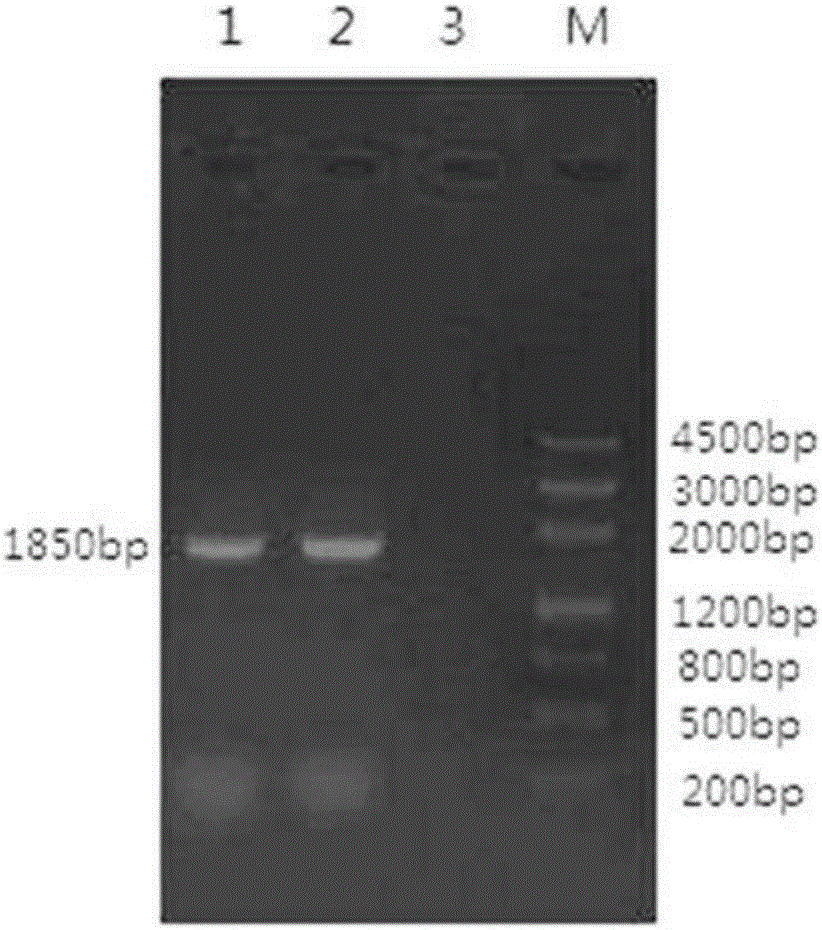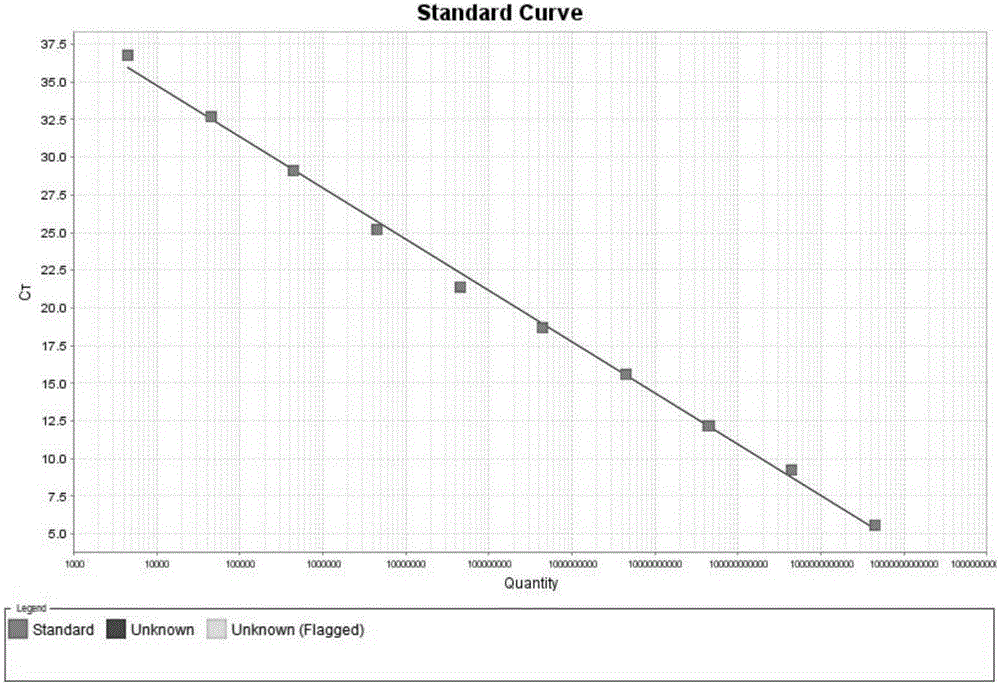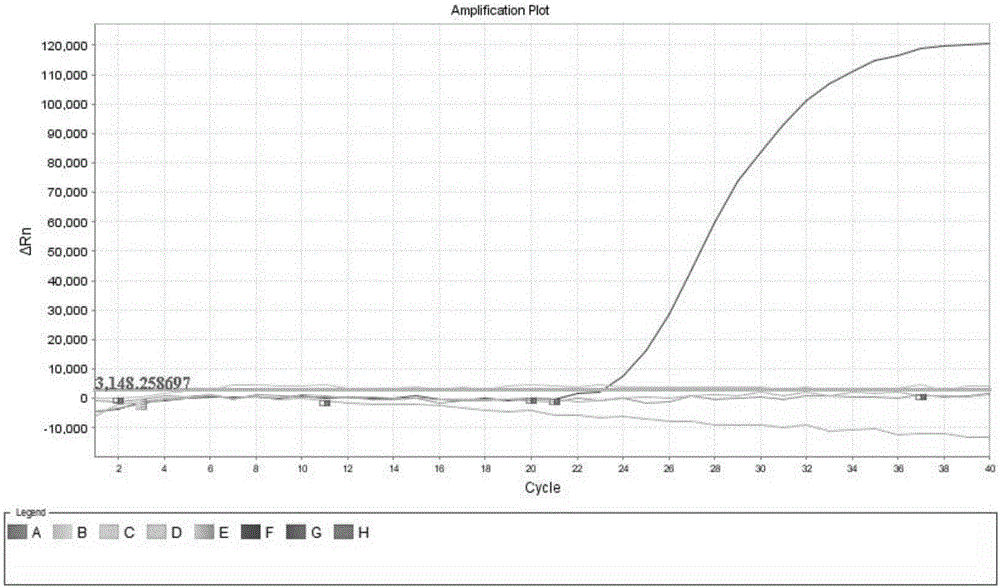K sub-group ALV (avian leukosis virus) fluorescent quantitation RT-PCR (reverse transcription-polymerase chain reaction) detection primer group and kit
An avian leukemia virus and fluorescence quantitative technology, which is applied in the determination/inspection of microorganisms, microorganisms, and recombinant DNA technology, etc., can solve problems such as research lag, and achieve the effects of high sensitivity, good repeatability and strong specificity.
- Summary
- Abstract
- Description
- Claims
- Application Information
AI Technical Summary
Problems solved by technology
Method used
Image
Examples
Embodiment 1
[0030] Example 1 Establishment of Fluorescent Quantitative RT-PCR Detection Method for K Subgroup Avian Leukosis Virus
[0031] 1 Experimental materials
[0032] strains, cells
[0033] American ATCC chicken embryo fibroblast cell line (DF-1), A subgroup avian leukemia RAV-1 strain (GenBank accession number: M19113), B subgroup avian leukemia RAV-2 strain (GenBank accession number: M14902), J subgroup Group avian leukemia strain HPRS-103 (GenBank accession number: Z46390), E subgroup avian leukemia strain RAV-0 (GenBank accession number: M12172), K subgroup avian leukemia strain GDFX0601 (GenBank accession number: KP686142.1), poultry Reticuloendotheliosis virus (REV), chicken Marek's disease virus (MDV), avian influenza virus (AIV), chicken infectious bronchitis virus (IBV) are the key experiments for the creation of veterinary vaccines by the Ministry of Agriculture of the Veterinary School of South China Agricultural University Room preservation.
[0034] 2 Experimental ...
Embodiment 2
[0054] Embodiment 2 specificity experiment
[0055] Using ALV-K, ALV-A, ALV-B, ALV-J, and ALV-E as templates, quantitative RT-PCR was carried out to detect its intraspecies specificity. Then ALV-K, NDV, REV, AIV, MDV, IBV, and DF-1 were used as templates to detect their interspecies specificity. The results showed that only ALV-K showed an "S"-type amplification curve, and other subgroups of ALV and other viruses did not show amplification curves, which proved that the method was highly specific and could effectively detect ALV-K, and Can be distinguished from other viruses (see image 3 and Figure 4 ).
Embodiment 3
[0056] Embodiment 3 Sensitivity experiment
[0057] positive recombinant plasmid from 8.4 × 10 10 Copies / μL starts with a 10-fold serial dilution, and uses each dilution as a template to perform a fluorescent quantitative RT-PCR reaction. Design a pair of primers (F: 5'-ACGCTTTCAGATTGGTCC-3' (SEQ ID NO.6); R: 5'-AAGCGAGAACCTGTCTGTGC-3' (SEQ ID NO.7)), target gene 182bp, positive recombination with the same dilution The plasmid was used as a template, and the conventional PCR reaction was carried out to compare the sensitivity of the two detection methods. The results showed that fluorescence quantitative RT-PCR can detect at least 8.4×10 1 Copies / μL of nucleic acid, ordinary PCR can only detect a minimum of 8.4×10 3 copies / μL, it proves that the sensitivity of TaqMan probe fluorescent quantitative RT-PCR is 100 times that of ordinary PCR, and this method is suitable for clinical detection of ALV-K and chicken farm purification ( Figure 5 and Figure 6 ).
PUM
 Login to View More
Login to View More Abstract
Description
Claims
Application Information
 Login to View More
Login to View More - R&D
- Intellectual Property
- Life Sciences
- Materials
- Tech Scout
- Unparalleled Data Quality
- Higher Quality Content
- 60% Fewer Hallucinations
Browse by: Latest US Patents, China's latest patents, Technical Efficacy Thesaurus, Application Domain, Technology Topic, Popular Technical Reports.
© 2025 PatSnap. All rights reserved.Legal|Privacy policy|Modern Slavery Act Transparency Statement|Sitemap|About US| Contact US: help@patsnap.com



